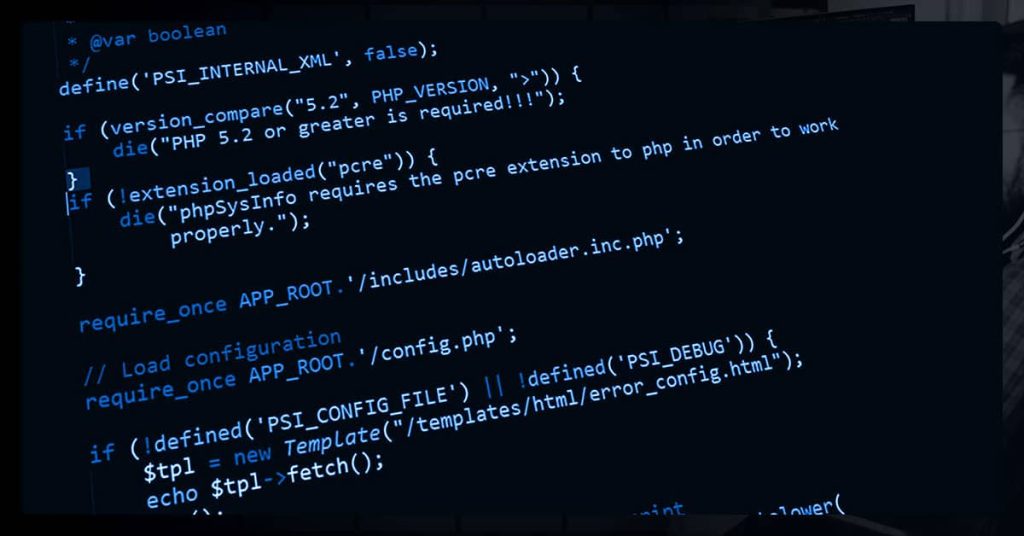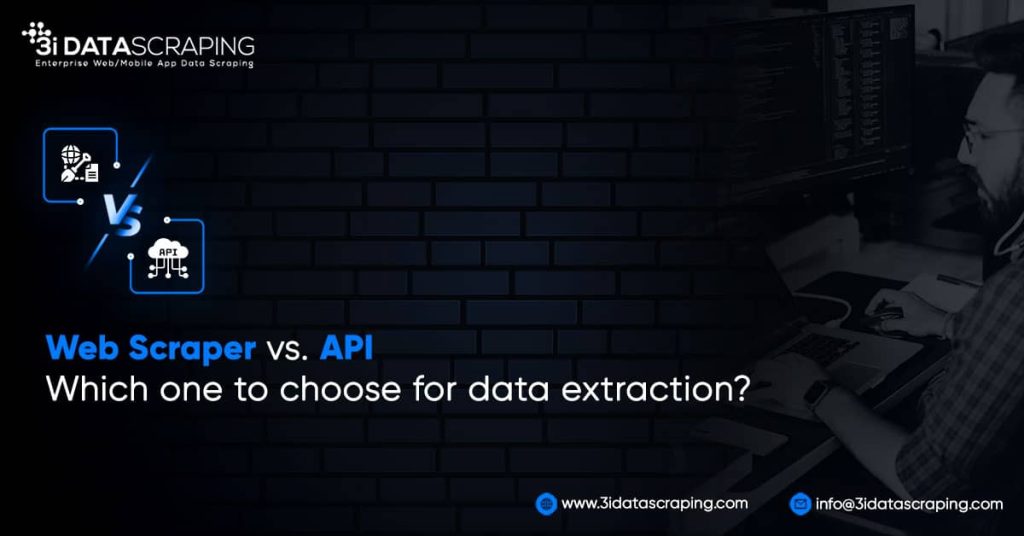Web Scraper vs. API: Which one to choose for data extraction?
Web Scraper and APIs are web data extraction tools. Web scraping is generally used for research and data collection, while APIs are more apt for business use cases. Before deciding which option to choose, it is important to understand what each option offers.
Our achievements in the field of business digital transformation.









It’s a tough choice because either way you go, you lose something. Web scraper is excellent for flexibility and interactivity, but it’s a little slow and can be troublesome when the data source updates or is taken down. API has a much faster turnaround time and an endless data archive, but there are limited options on what you can extract from the API due to its design constraints. So which one should you choose?
After weighing all the pros and cons, we’ve found that web scraping might be a better choice for some people in specific scenarios.
What is a web scraper, anyway?

A web scraper is a script that scrapes data from a site, saves it to external storage, re-scrapes the same or different page on the same site, and stores it in external storage. That’s pretty much it. As you can see, web scrapers are pretty straightforward in operation. You have to know how to program one and have experience in web scraping because there’s no general “how-to-scrape” guide that can give you all the answers. In other words, you will get the hang of it only if you do a lot of practice, and the more experience you get, the better your scraper gets.
Data scraping vs. API

Analyzing the pros and cons of a web crawler vs. web scraping, we’ve found that web scrapers win in terms of flexibility. API restricts the data that can be extracted from it, which may or may not be a good thing depending on your situation.
For example, let’s say you want to extract data from your customer database to organize it based on employee name. With API, you can only extract the data for employees with a specific department name. You probably don’t want all your customers’ email addresses and password reset ids uploaded to the cloud (if you have an API). So what do you do? You scrape them by hand! Just note that scraping by hand is slower than web scraping, so if speed is most important, go with web scraper.
And the good news is that you can use web scraping to gain insight into other data. If you know how to scrape, you can use it for marketing purposes by scraping data from your competitors’ websites and extracting valuable information from them. You can analyze the data you’ve scraped and visualize if you have programming skills and knowledge.
The bottom line is that if speed is your top priority, go with a web scraper.
Why might you want to use a web scraper?

Speed and interactivity:
You’re used to scraping sites manually or with the help of other applications like PHP, but their speed and interactivity are often inferior to what you’re used to with websites like eBay or Amazon. Web scrapers enable you to interact with websites in real-time, allowing you to scrape more pages simultaneously with less delay between requests.
You’re used to scraping sites manually or with the help of other applications, but their speed and interactivity are often inferior to what you’re used to with websites. Web scrapers enable you to interact with websites in real-time, allowing you to scrape more pages simultaneously with less delay between requests.
Extensibility:
You can also add features that your web scraper didn’t initially have, such as external back-end support (databases, complex data processing, etc.), and use it for other automated tasks.
Infinite archive:
Whether the site you’re scraping is a well-designed and maintained application or simply a collection of poorly coded websites with bad SEO, and you can scrape all of them with the same web scraper.
What might make you use an API instead?

The data you want is limited only to what the API can scrape: Think about it. Say you want to extract all the data from the Social media sites’ home page. How would you do it? You can take a snapshot of the page and save it, then crawl through the image with a web crawler. How do you get an image of every post on all your users’ walls? You would have to run a PHP script that loads up a different Social media site user’s wall at intervals of X seconds. Then save all those saved images, or try and find an information architecture that could provide you with some list detailing your users’ information in JSON format.
With API, you have to scrape the data in a structured way. This means no crawling of information; you can’t use it on websites not designed to be scraped.
Security:
You can’t perform SPA or browser-based scraping with an API. Plus, if, for some reason, the owner decides that he doesn’t want to allow access to his users’ data anymore, you would have to stop your program immediately. When scraping web pages, you have at least more time before they take them down.
Speed:
This is supposed to be a self-explanatory point. With API, the time it takes to receive data depends on your internet connection speed. It can give you slow response times, making it difficult for your program to continue functioning correctly.
However, for large (and small) scale data harvesting operations, web scraping is not your best choice as web scraping consumes much fewer resources and therefore allows you to process a more significant amount of data at a time. Also, since web scrapers are always on, you won’t have to worry about a slow link affecting the success of your functionality. In this respect, APIs come in handy only when you need a short turnaround time and a high throughput rates.
Web Scraper vs. API: Which one to choose for data extraction?

In short, there’s no clear winner when choosing between web scraping and API. However, if you don’t have a lot of experience with web scraping or need to extract data quickly while your “back-end” is not as crucial as with APIs (for instance, if your focus is knowledge extraction), go with web scraping, otherwise, if you need to extract more data while maintaining a high degree of interactivity and feel as if an API would be the better option for you.
You can always decide what’s best for you and your projects. The tools you have at your disposal aim to help you solve a specific problem. It’s important to remember that yourself so that you can get the most out of them.
Conclusion
Web scraper and API both have their pros and cons. Which one you choose depends on your specific situation. A web scraper is the right choice if you need extensive data. If speed is most important to you, API is your best option. You can also use API to check your competitors’ data.
The expansion of APIs has enabled new tools that were not possible before. Many tools and services are available for developers today, and more enter the market every day. Many offer useful functionality, but many have been designed as “one size fits all” solutions. The time has come to break out of the one size fits all mold and create separate solutions that meet specific requirements. Web scraping provides the ideal bridge between traditional web-based solutions and API-enabled new tools, bringing together their best features in a single solution.
By utilizing the solution, it is possible to process large amounts of data effectively and, at the same time, provide developers with valuable insight into websites’ programming architecture. At its core, it utilizes vulnerability vectors already present on many websites. In addition, this technique can help to research both one’s and competitor’s websites, as it provides actionable information that is easy to consume and further analyze. Web scraping has been effectively used in various commercial applications over the years for everything from price comparison to knowledge extraction.














What Will We Do Next?
- Our representative will contact you within 24 hours.
- We will collect all the necessary requirements from you.
- The team of analysts and developers will prepare estimation.
- We keep confidentiality with all our clients by signing NDA.





